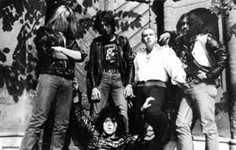To Your Health
Why are those sticky labels on fruits and veggies, and are they harmful if swallowed?
By James Heffley, Ph.D., Fri., April 28, 2006
A. The tiny label is called a "Price Look-Up," or PLU, label, and it is there because the stores that sell produce want the information it supplies. The four-digit number on the label identifies the kind of fruit or vegetable, including the size when there are several sizes available, and a fifth prefix number can be used to signify fruit that is organically grown or otherwise special.
If you remember the grocery stores of a generation back, you know that the selection of produce then was ordinarily rather skimpy. If pears were in season, they were probably in a single bin, and the price was posted over the bin. The person checking you out would have to remember how much pears were selling for or, at worst, could consult a short list and find out the price at the time. Today, it is not unusual for a supermarket to offer half-a-dozen varieties of pears and may offer one variety conventionally grown and the same variety, looking no different from the other pears, organically grown. The price difference between all these pears can be substantial, and it is important that the checker charge the correct price. The PLU label provides all the information needed to find the right price.
In addition to price, the PLU label can identify the country of origin of the product. Since the 9/11 tragedy, the grocery industry has been encouraged to develop ways to trace food through the distribution system, and soon there will be U.S. regulations that require a tracking system for all food, similar to the PLU label.
One company makes all the PLU labels that are used on fruits or vegetables, and the labels appear to be entirely nontoxic and even free of gluten, a common allergen. There are, however, efforts to replace the rather unhandy PLU label with other methods of conveying the information. Computer software that would scan and recognize a fruit or vegetable could be developed, but this would not tell anything about the special qualities, such as whether it was organically grown or not. A blueberry-based dye is being tried but has a tendency to smear. A laser that burns a mark into the skin of fruits and vegetables is promising because even as it cuts the skin it seals the shallow cut it makes so that no juice is lost.
In addition to the PLU number, the label can be a colorful form of advertising. California fruit growers use a recognizable label so that people will soon get to know which fruit is grown in California. The PLU number can also contain that information but only in the code that most consumers would not take the trouble to learn.
Before you decide that there is nothing good about PLU labels, consider their potential as collectible items. Most of us are too old to recall such items as the gas ration coupons used in World War II, S&H Green Stamps, and such like, but these are now prized. Could it be that someday a PLU label for kiwi fruit from Hawaii would be valuable? Stranger things have happened.






